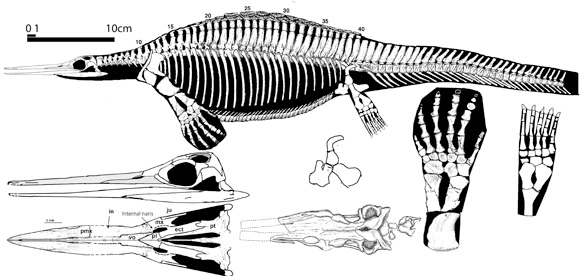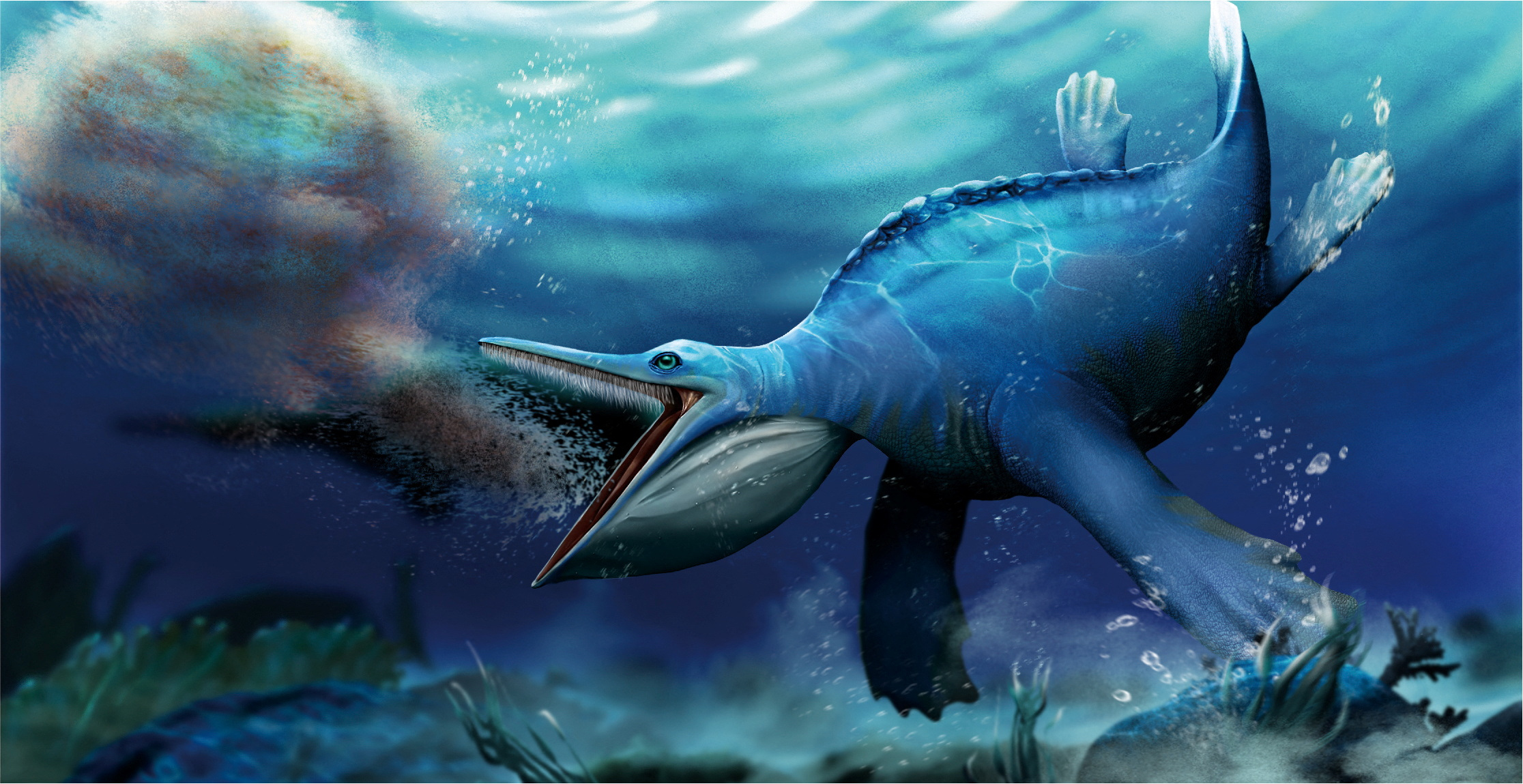 Being a marine reptile that lived before the time of the dinosaurs , it has nothing to do with current whales (instead of mammals). Yet, its discovery seems to confirm the extension of a fascinating natural phenomenon of evolutionary convergence, capable of partially uniting animals that lived in different geological eras, evidently linked by similar needs:
Being a marine reptile that lived before the time of the dinosaurs , it has nothing to do with current whales (instead of mammals). Yet, its discovery seems to confirm the extension of a fascinating natural phenomenon of evolutionary convergence, capable of partially uniting animals that lived in different geological eras, evidently linked by similar needs:

To discover the ancient marine creature was a team of scientists from the United Kingdom and China has found some extraordinary new fossils that belong to a group of reptiles that already used filtered food about 250 million years ago . The findings are described in a study published Aug. 7 in the journal BMC Ecology and Evolution . Whales aren’t the only modern animals to use filter feeding as some large fish like basking sharks use their gills to take food from the water. Until now, paleontologists had very little evidence from the fossil record to suggest that some ancient marine reptiles of the Mesozoic Era (about 252 to 66 million years ago) were also filter feeders. In this new study from 2023, the team has found two new fossilized skulls that belong to an early marine reptile called Hupehsuchus nanchangensis . The roughly three-foot-long creature lived in China about 248 million years ago in the Early Triassic period . The extensive competition for food that characterized this important geological period may have prompted H. nanchangensis to develop a specialized and at the time innovative feeding system:

“This was a time of turmoil, just three million years after the huge end- Permian mass extinction that wiped out most life. It was astonishing how quickly these large marine reptiles appeared on the scene and completely changed marine ecosystems at the time , ” study co-author and University of Bristol vertebrate paleontologist Michael Benton said in a statement.. One of the specimens is well preserved from head to clavicle (clavicle) and the other is a nearly complete skeleton. The team compared the shape and size of the latter skull to 130 skulls of various aquatic animals, including 15 fin whale species, 52 toothed whale species, 23 seal species, 14 crocodilians, 25 bird species, and the platypus:
They found that the skulls of Hupehsuchus had soft structures such as an expanding throat region, which probably allowed these ancient reptiles to absorb huge amounts of water that they had tiny shrimp -like prey items and structures – similar, then, to those that today it is possible to observe in modern whales – that they filtered their food as they swam forward. Hupehsuchus skulls also feature some grooves and notches located along the edge of its jaws that are similar to whales. These modern-day mammals – called baleen whales – have baleen strips made of keratin in their mouths instead of teeth like Odontocetes ortoothed whales (for example the orca or the sperm whale , instead provided with teeth). The mostly complete fossilized skulls also had a long snout composed of unfused, strap-like bones, as well as a long gap between them and the length of the animal’s snout. This skull shape is only seen in whales and is what allows them to eat krill :

“We were amazed to discover these adaptations in such an ancient marine reptile , ” study co-author and Wuhan Center of China Geological Survey paleontologist Zichen Fang said in a statement . “Hupehsuchians were a group unique to China, close relatives of ichthyosaurs and known for 50 years, but their way of life was not fully understood” . Because of its rigid body, H. nanchangensis was probably a slow swimmer, and this lack of speed suggests that it may have filtered similarly to today’s bowhead or right whales . These modern animalsthey swim with their mouths wide open near the ocean surface to filter food from the water. These new discoveries therefore represent a sure example of convergent evolution , a process in which similar characteristics have evolved independently in different species:

Evolutionary convergence is defined as the phenomenon whereby different species living in the same type of environment , or in similar ecological niches , driven by the same environmental pressures, evolve by developing, by natural selection , certain structures or adaptations that lead them to look very similar. Such species are called convergent. Cases of evolutionary convergence can be observed both between life forms present simultaneously in different areas of the world, and by comparing fossil remains belonging to different geological eras .
#fossil #paleontology #whales #marine reptile #mesozoic #triassic










